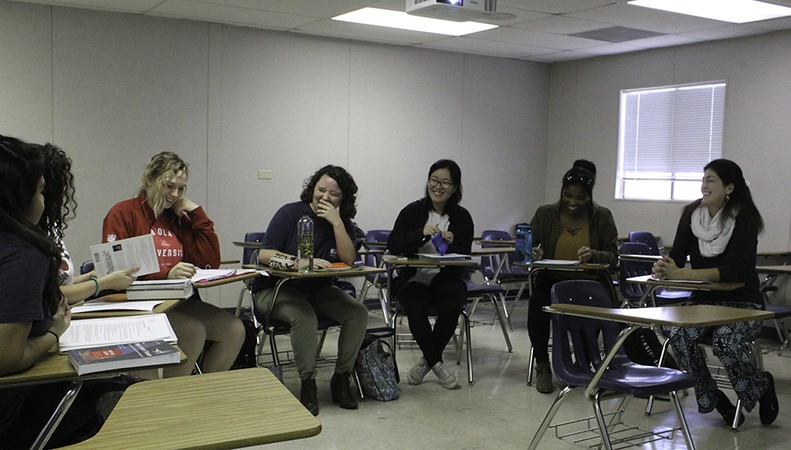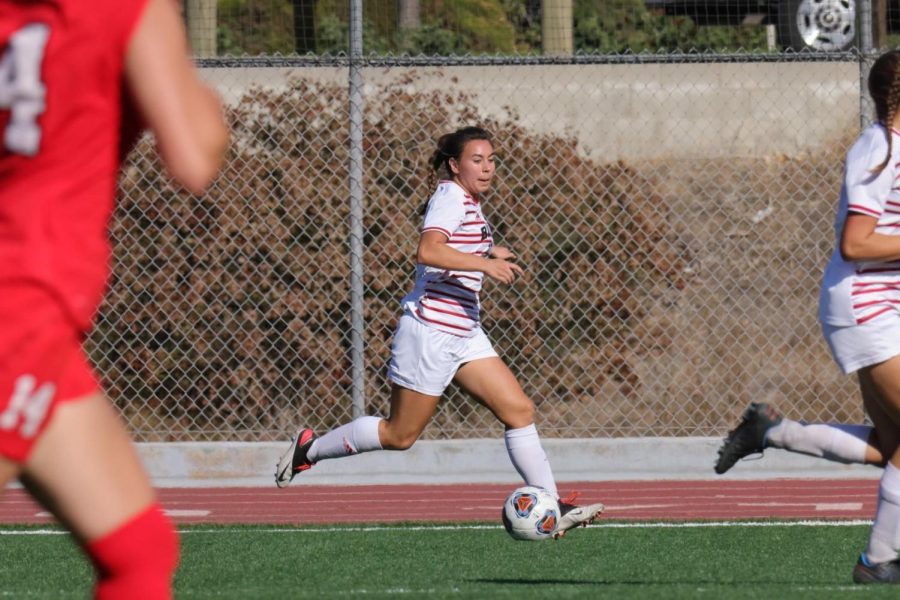Every couple years, theatre majors have the opportunity to take Communication Studies 391, which poses a considerable challenge—directing. This year, only females joined the class, creating a different classroom dynamic.
A NEW DIRECTION
This class, taught by associate professor of theatre Kate Brandon, allows students to engage in the art of directing with hands-on experience, while simultaneously learning the basics of directing through guidance and supervision.
“Everything we do is geared towards [directing],” Brandon said. “In other classes, there’s different subject matter, or, if they’re directing a scene or something, it’s just not quite as comprehensive and the process is not as detailed.”
Brandon shared how for the first time this class, made up entirely of women, allows its female students to participate and engage differently than they may in a co-ed class.
“In the past, we’ve had a mixed group, so… I don’t think it changes the content, in terms of the process and understanding of the craft of directing,” Brandon said. “It seems like the context of our discussions can be a little different. But it’s mostly geared around learning directing, so it’s more the interaction, I think, in the discussions or topics raised relating to the course content, that that would come into play.”
As a testament to this, senior theatre major Victoria Sanchez recounted how the female composition of the class changes the ambiance of the classroom.
“So we initially had to do a project on a certain director, and every single one of us picked women, which was really cool. And she was like, ‘Oh, are you picking them because they’re women?’ and we were like, ‘Actually, no,’” Sanchez said. “So I chose the director of ‘The Lion King’ because I like the ‘The Lion King.’ Turns out she was a woman.”
Junior theatre major Reagan Smalley explained how, while she appreciates men, they have the natural ability to demand attention for themselves, whether or not they realize it.
“[Men] just tend to dominate a space,” Smalley said.
The all-female classroom environment provides the women in the class to speak out freely without fear of an upperhand, according to Smalley. With no one to shut down their ideas, these women consider each other’s ideas in depth.
“But here—now that we’re in a space where everyone’s on [an] equal playing field and everyone has the opportunity to share their opinions—I’ve noticed every single person speaks up at least once in class because they all feel open and welcome to do so, and nobody just accepts someone’s definition, they’re always like, ‘Okay, but what about this?’” Smalley said.
A WOMAN’S PLACE
Smalley presented the idea of supply and demand in terms of theater—directing specifically. She noted how some people believe the reason women do not win many directing awards derives from there not being enough women who direct.
“The play that we’re doing right now on this campus, ‘Metamorphoses’—that was a play that won a Tony and was directed by a woman as well,” Smalley said. “Which is really just interesting and fascinating and a lot of times people will use the argument of, ‘Oh, well women haven’t won that many awards in this area because there aren’t enough supply.”
Since directing can be thought of as primarily a man’s role, Smalley believes that the all-female directing class allows women to demonstrate their desire for this role by participating in the action.
“And so I feel like what this class does is it shows everyone that there is a supply, and there is a demand. Because obviously if we’re having an all-female directing course, that means that there are female directors who want to come out, who want to do this,” Smalley said.
Each member of the class has a different story and background as to how they arrived in this particular class, but Sanchez shared that the differences weave the classmates together in a way that allows for an exciting space to experience the art of directing.
“Some of us have a lot more experience and some of us are taking the class—really to learn what it is. And so it’s nice, because a lot of us have known each other for so long, and are making great friends, that it creates a really cool environment in which to make art.” Sanchez said.







